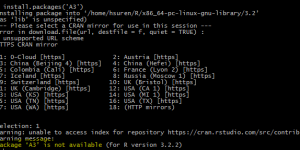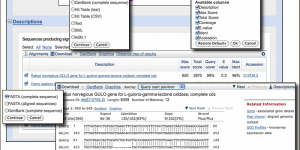Coding in the Age of AI: What You Need to Know
If you’re developing an enterprise-grade cloud application, you understand that success doesn’t come instantly. With extensive experience deploying thousands of microservices, managing Kubernetes clusters, and optimizing CI/CD pipelines for high-performance SaaS products, I’ve gained valuable insights. Here’s an expert perspective on leveraging AI in cloud application development for optimal scalability, efficiency, and innovation.
1. AI Is Your New Sidekick, Not Your New Lead Programmer
- Boilerplate on the fly: Give an AI a prompt and it’ll churn out CRUD controllers, Redux reducers, or a React component in seconds.
- Refactor suggestions: It spots duplicate logic, proposes DRY patterns, and can even rewrite a loop to be faster.
- Test skeletons: AI can auto‑generate unit tests and edge‑case scenarios that you’d normally spend hours drafting.
- IDE integration: Chat‑style extensions mean you can keep typing in your editor while the AI keeps the suggestions coming.
Bottom line: AI frees you from the grunt work so you can focus on solving the hard problems.
2. Don’t Expect AI to Spin Up a Production‑Ready System
- Draft‑level output: The code it gives you is usually a good starting point, but it’s not a plug‑and‑play, battle‑tested solution.
- Missing architecture: AI doesn’t magically design your multi‑tenant data model, payment gateway, or auto‑scaling rules.
- Context loss: It struggles with long‑term specs, legacy integration, and business‑specific nuances.
- Maintainability: Generated code can be a bit messy, so future extensions still need a seasoned hand.
So while you can spin up a Single‑Page Application (SPA) with AI help, take that code through the usual vetting, security reviews, and performance tuning before you ship it.
3. Senior Developers and DevOps Still Own the Critical Path
- Architectural vision: Senior engineers decide on the service mesh, database sharding, and event‑driven pipelines that keep your system humming.
- CI/CD mastery: Setting up pipelines, container registries, Helm charts, and rollback strategies is still a human job.
- Code review & QA: AI can generate tests, but humans catch subtle bugs, enforce style guides, and ensure compliance.
- Mentorship: Experienced devs guide juniors through tricky edge cases that AI can’t anticipate.
Even when AI handles the boilerplate, a project that’s anything more than a toy still requires a handful of senior folks.
4. AI as a Mentor for the Next Generation
Imagine a junior dev who gets instant, context‑aware feedback on every line they write. AI can:
- Accelerate learning: Quickly pick up patterns, syntax, and best practices.
- Scale up skill levels: Gradually expose them to more complex problems as they grow.
- Keep up with trends: Models get updated, so developers stay current without extra training.
In time, senior engineers will become the ones managing and refining the AI, turning the tool into a self‑improving training platform.
5. Practical Advice for Stakeholders
- Set realistic timelines: AI speeds up the surface layer, but testing, security, and scaling still take weeks, not days.
- Invest in seasoned talent: For any multi‑tenant, payment‑enabled, or high‑availability system, you’ll need experienced developers and DevOps.
- Don’t skip QA: Automated tests are great, but human review is essential for production readiness.
- Build robust pipelines: Configure CI/CD, monitoring, and disaster‑recovery before you rely on AI for deployment.
- Expect a learning curve: Teams need to adapt workflows to incorporate AI, from new review processes to updated documentation.
In my experience, even the most well‑engineered SaaS product can’t be rushed into production without a solid engineering backbone.
6. The Bottom Line
AI is a powerful productivity booster. It can generate code, suggest optimizations, and even write tests faster than any human. But it’s not a silver bullet that will turn a sketch into a scalable, secure, enterprise‑grade application overnight.
What you’ll still need:
- Architects to design the system.
- Senior developers to oversee quality and complexity.
- DevOps to build and maintain pipelines.
- Business owners to set realistic expectations.
If you keep that in mind, AI will become a trusted sidekick that lets your team focus on the parts of development that truly matter.












Wrap your code in
<code class="{language}"></code>tags to embed!